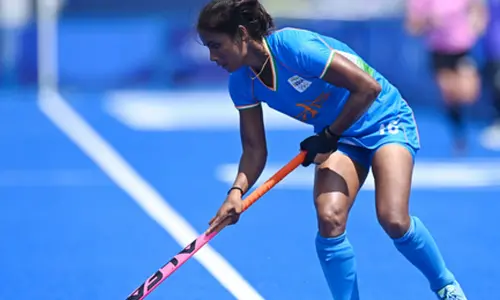Gender gap in Internet access narrowing: Facebook study

Men still have more Internet access than women globally but low and lowermiddleincome countries narrowed the gender gap in 2018, a Facebookled study has revealed
San Francisco, Feb 26: Men still have more Internet access than women globally but low- and lower-middle-income countries narrowed the gender gap in 2018, a Facebook-led study has revealed.
According to the Inclusive Internet Index (3i) prepared by the Economist Intelligence Unit (EIU) for Facebook, there are demonstrable benefits from comprehensive female e-inclusion policies, digital skills programmes and targets for women and girls to study science, technology, engineering and mathematics (STEM).
The UK, Namibia and Ireland, followed by Austria, Chile and South Africa, are among the top performers of the year, all with female digital skills training plans.
"Inclusion for women and those with disabilities has improved, with low-income and lower-middle-income countries driving progress," Robert Pepper, Head of Global Connectivity Policy and Planning at Facebook, said in a blog post on Tuesday.
"However, affordability is declining relative to monthly income in many countries, disproportionately affecting women and people in low-income countries, all of whom are more reliant on mobile as their primary means of accessing the Internet," Pepper mentioned.
While the percentage of households connected to the Internet globally increased, on average from 53.1 per cent to 54.8 per cent, the rate of growth in Internet connections slowed to 2.9 per cent in 2019 from 7.7 per cent in 2018.
"In some countries, fixed-line Internet access is too expensive or inaccessible, that's why mobile services are critical.
"While lower-middle-income countries had a significant 66 per cent improvement in 4G coverage, low-income countries saw a moderate 22 per cent improvement," informed the report.
The Index this year was expanded to include 100 countries, representing 94 per cent of the world's population and 96 per cent of global GDP.
Web accessibility standards also improved globally, led by low- and lower-middle-income countries.
There are still about 3.8 billion people around the world without fast and reliable Internet access.
"Although the overall gap between those with access to the Internet and those without narrowed, the lowest income countries fell behind because they improved at a slower rate than other countries and much slower than last year.
"Internet connections in low income countries increased by only 0.8 per cent compared to 65.1 per cent last year," the findings showed.
More than half (52.2 per cent) of respondents said they are not confident about their online privacy.
"Yet the majority of respondents (74.4 per cent) think the Internet has been the most effective tool for finding jobs," the report said.
















